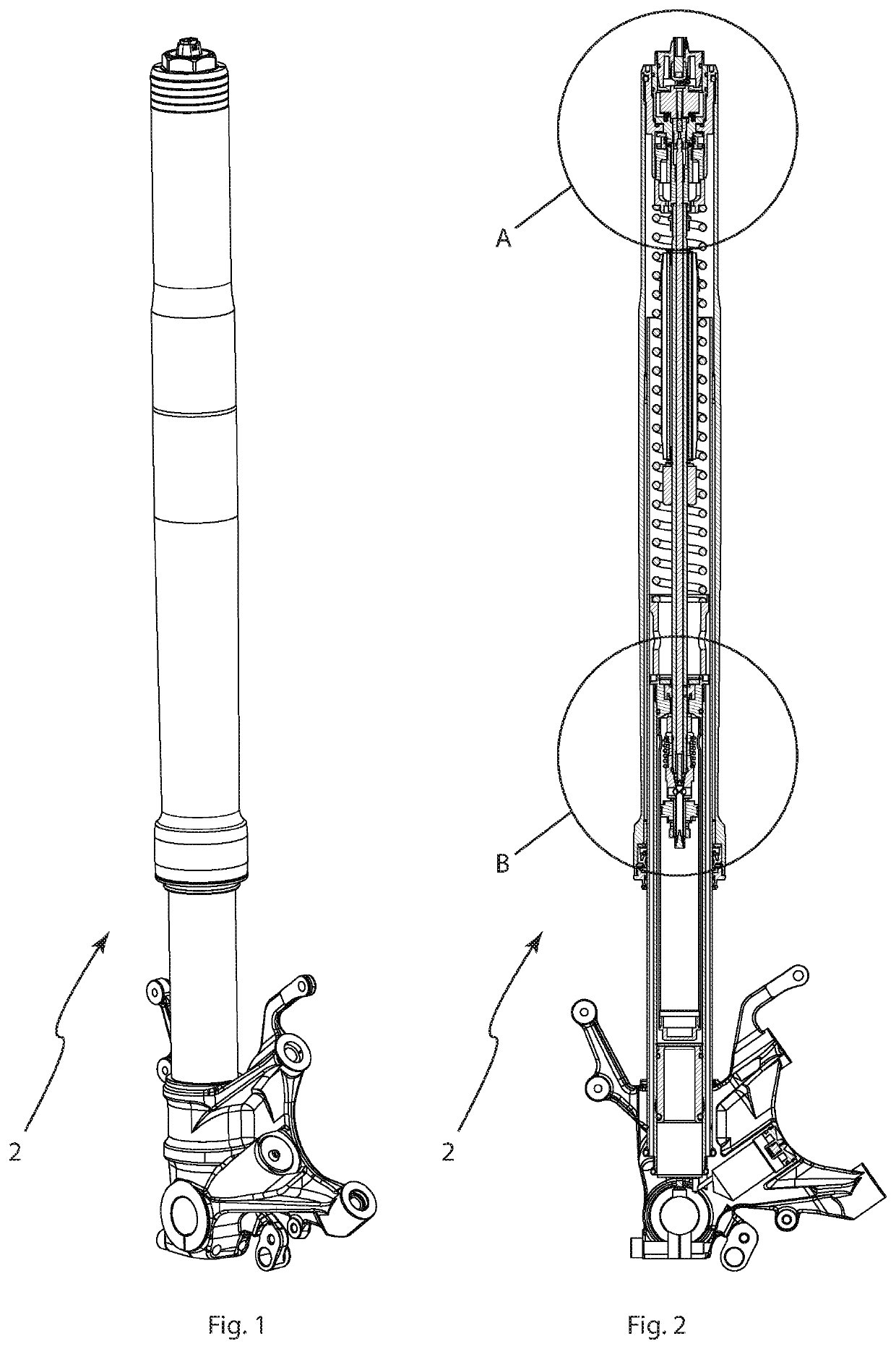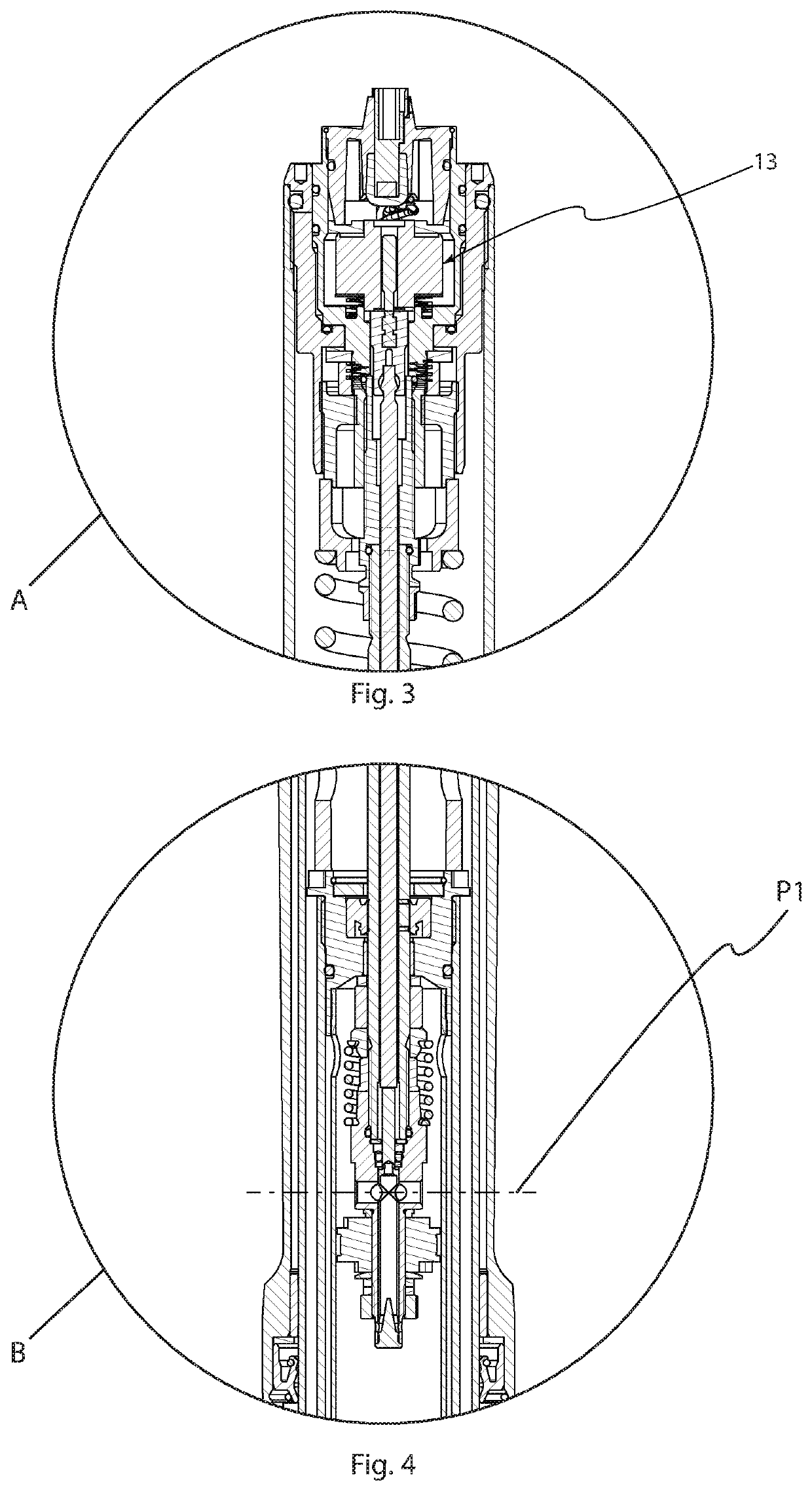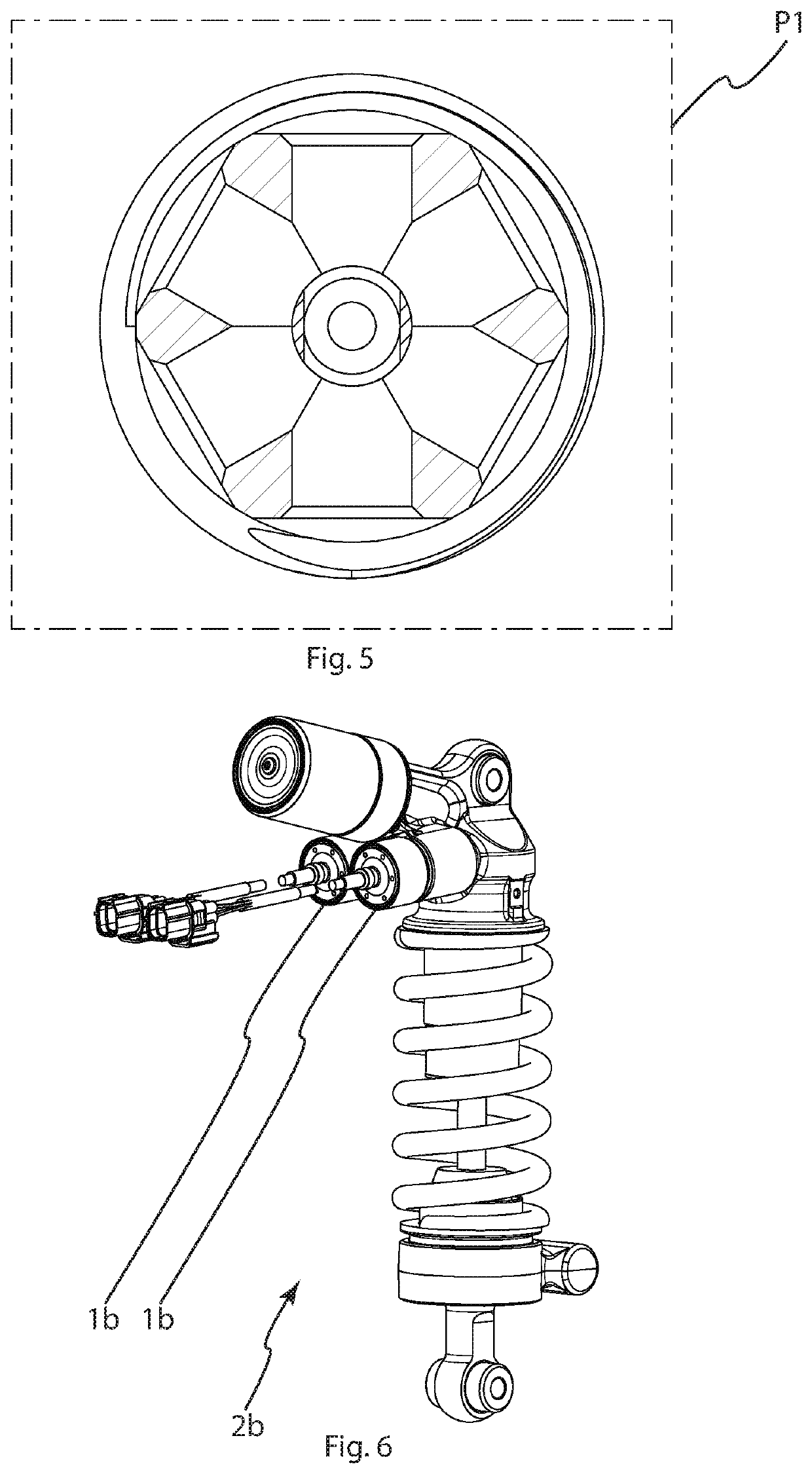Electronically controlled valve for a shock absorber
- Summary
- Abstract
- Description
- Claims
- Application Information
AI Technical Summary
Benefits of technology
Problems solved by technology
Method used
Image
Examples
Embodiment Construction
[0039]The disclosed embodiments will hereinafter be described in more detail with reference to the accompanying drawings in which several embodiments of the invention are shown. However, the invention may be embodied in many different forms and should not be construed as limited to the embodiments set forth herein. Rather, these embodiments are provided by way of example so that this disclosure will be thorough and complete, and will fully convey the scope of the invention to those skilled in the art. Like numbers refer to like elements throughout the description.
[0040]A shock absorber 2a comprising a valve according to a first embodiment of the invention is shown in FIGS. 1-4 and 6. A valve according to a second embodiment of the invention is shown in FIGS. 5 and 7.
[0041]The shock absorber 2a of FIGS. 1-4 is typically used for damping the movement of a front wheel of a motorcycle, although other uses are possible. The damper uses a known twin tube design to route damping fluid duri...
PUM
 Login to View More
Login to View More Abstract
Description
Claims
Application Information
 Login to View More
Login to View More - R&D
- Intellectual Property
- Life Sciences
- Materials
- Tech Scout
- Unparalleled Data Quality
- Higher Quality Content
- 60% Fewer Hallucinations
Browse by: Latest US Patents, China's latest patents, Technical Efficacy Thesaurus, Application Domain, Technology Topic, Popular Technical Reports.
© 2025 PatSnap. All rights reserved.Legal|Privacy policy|Modern Slavery Act Transparency Statement|Sitemap|About US| Contact US: help@patsnap.com



